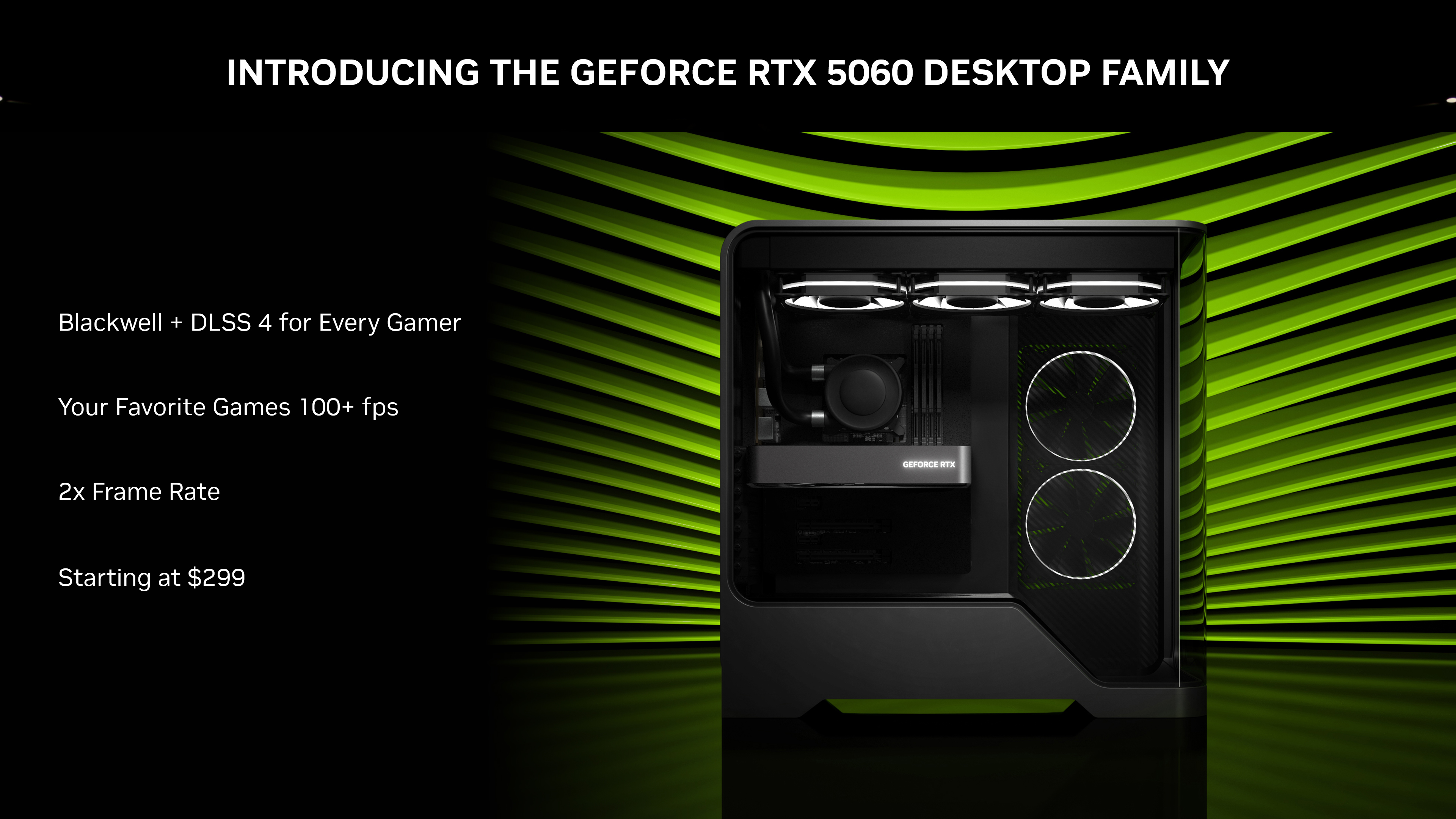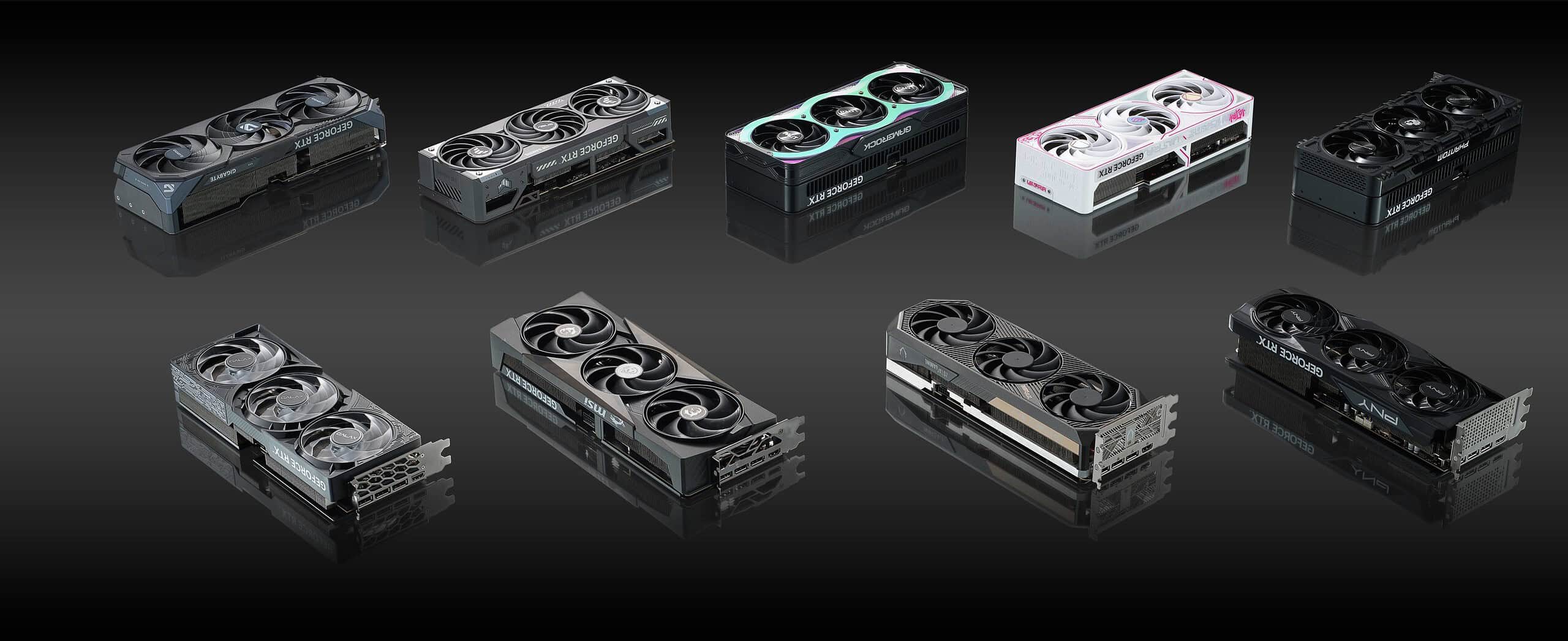The debate between 8GB and 16GB VRAM on the RTX 5060 Ti is heating up—and for good reason. In 2025, modern games are pushing GPU memory harder than ever. High-resolution textures, ray tracing, and larger open worlds all demand more VRAM. That leaves many gamers wondering: is the 8GB model already outdated, or can it still hold its own?
The VRAM Bottleneck Is Real
Today’s biggest releases like Hogwarts Legacy, Alan Wake 2, and The Last of Us Part I are already pushing past 8GB of usage—even at 1080p with high settings. When you run out of VRAM, your system starts to rely on system memory or the page file, which tanks performance. The result? Stutters, delayed texture loading, and an overall choppy experience.
This has made the 16GB RTX 5060 Ti much more appealing, especially for gamers looking to build a future-proof rig. While both models share the same GPU core specs—4,608 CUDA cores, a 128-bit GDDR7 memory bus, DLSS 4, and Multi Frame Generation—the extra VRAM really sets them apart under real-world gaming loads.

Performance in the Real World
RTX 5060 Ti 16GB:
- Outperforms the RTX 4060 Ti 8GB by ~19% at 1080p and ~21% at 1440p.
- Handles modern AAA titles at high/ultra settings with ease, especially when ray tracing is enabled.
- Allows for 4K gaming with reduced settings, unlike the 8GB model.
- Shows significant improvements in titles that use high-res textures or mods (Starfield, Baldur’s Gate 3, Cyberpunk 2077).
RTX 5060 Ti 8GB:
- Great for 1080p gaming in older or optimized games like Apex Legends, Valorant, and CS2.
- Performs similarly to the 16GB model in select eSports titles and games that don’t eat up VRAM.
- Shows signs of memory pressure in newer games, resulting in frequent frame drops and longer loading times.
Head-to-Head Comparison Table
| Feature | RTX 5060 Ti 8GB | RTX 5060 Ti 16GB | Winner / Use Case |
|---|---|---|---|
| VRAM | 8GB GDDR7 | 16GB GDDR7 | 16GB – Essential for modern gaming |
| Bus Width | 128-bit | 128-bit | Tie |
| CUDA Cores | 4,608 | 4,608 | Tie |
| DLSS Support | DLSS 4 + Multi Frame Gen | DLSS 4 + Multi Frame Gen | Tie |
| 1080p Gaming Performance | Strong | Stronger | 16GB (especially in newer games) |
| 1440p Gaming Performance | Limited | Smooth | 16GB – Better for high-resolution play |
| 4K Gaming | Not recommended | Playable at medium settings | 16GB – If you’re aiming for 4K |
| Future-Proofing (2025–2028) | Weak | Strong | 16GB – Lasts longer with new releases |
| MSRP | $379 | $429 | 8GB for budget; 16GB for value |
| Real-World Retail Price (Apr ’25) | $379–$399 | $489–$529 | 8GB wins price; 16GB wins performance |
Market Trends and Availability
The RTX 5060 Ti 16GB is in high demand right now, often selling above MSRP. Retailers like Newegg and Micro Center report low stock and rising prices, particularly as major summer PC releases approach. Meanwhile, the 8GB version has seen less shelf presence, leading to speculation that NVIDIA may have underestimated the importance of VRAM in today’s gaming landscape.
Final Thoughts: 8GB Is Barely Enough—16GB Is the Smarter Buy
If you’re trying to stretch your build to last for the next 3–4 years, the 16GB RTX 5060 Ti is hands down the smarter purchase. You’ll get better performance now, smoother gameplay in memory-hungry titles, and a card that’s built to handle whatever comes next. The 8GB version is only worth considering if you’re strictly gaming at 1080p in older or well-optimized games—and even then, it’s a tight fit.
Bottom line: In 2025, 16GB is the new baseline for anyone who wants to game without compromise.
Key Takeaways
- 16GB VRAM delivers noticeably better results in new games than 8GB.
- The RTX 5060 Ti 16GB is a smarter pick if you want your rig to stay relevant into 2025.
- Gamers report that 8GB can hold back graphics settings in the latest PC games.
Comparing 16GB vs 8GB RTX 5060 Ti: Gaming and Performance Analysis
The Nvidia RTX 5060 Ti ships with either 8GB or 16GB of GDDR7 VRAM. That memory size has a big impact on how well the card deals with today’s games, what kind of frame rates you’ll see, and how high you can crank the settings at common resolutions.
VRAM Requirements in Modern Games
Games like Cyberpunk 2077 are now pushing high-res textures and fancy effects that eat up VRAM fast. Plenty of modern titles already use more than 8GB, especially if you want everything maxed out or you’re running big texture mods.
Sticking with 8GB can hold you back. You might get stuck with lower quality assets or run into stutters when things get hectic. The 16GB version, on the other hand, can keep more high-res textures and geometry loaded, so there’s less swapping and fewer slowdowns.
Some games even pop up VRAM warnings on 8GB cards, nudging you to lower settings if performance gets choppy. It’s not just a scare tactic—by 2025, 16GB is starting to look like the baseline for a smooth ride with the latest, most demanding games.
Performance Benchmark Results
Benchmarks show the RTX 5060 Ti 16GB pulling ahead of the 8GB model in pretty much every AAA title that goes over the 8GB mark. A Tom’s Hardware review found a performance bump of about 19% over the old 4060 Ti 8GB, and even more compared to the 5060 Ti 8GB in certain games.
Testing across a bunch of games made it clear: once VRAM use goes past 8GB, the smaller card starts to stumble—hitches, frame dips, and texture pop-in get obvious. The 16GB card keeps things steadier and avoids those sudden drops. 3DMark scores and in-game results show the biggest gaps in open-world games or those with lots of post-processing.
Of course, in older or lighter games, both cards do fine. But once you hit that VRAM ceiling, the difference is hard to ignore.
Influence of Resolution: 1080p vs 1440p
At 1080p, both cards still handle most games well, but new releases at ultra settings (or with big texture packs) can push right up against 8GB. Jump to 1440p and VRAM use climbs even faster.
The RTX 5060 Ti 8GB starts running into memory walls at 1440p in some of the newer or less optimized games. You end up dropping texture quality or effects just to keep stutter away. With 16GB, you can keep settings higher and avoid those compromises, so visuals don’t have to take a hit.
For games coming out after 2023, 16GB VRAM gives you some breathing room—less worry about slowdowns and more consistent frame rates, even as game demands keep growing.
Ray Tracing, DLSS 4, and AI Upscaling Impact
Ray tracing and DLSS 4 both chew through VRAM. Turn on ray tracing in games like Cyberpunk 2077, and suddenly that 8GB feels tight. The 16GB RTX 5060 Ti handles these features more gracefully, especially at higher settings.
DLSS 4 uses AI and those fancy Tensor Cores for upscaling and frame generation, which can take some load off the GPU but might actually nudge VRAM use up a bit—extra frame data and high-res buffers need a place to go. On an 8GB card, you could run out of space in heavy games and see dropped frames.
The 16GB model deals with all that better, keeping things smooth even with ray tracing and AI features maxed out at 1440p. If you want the shiny stuff on, more VRAM just makes life easier.
Market Position, Pricing, and Future-Proofing in 2025
The Nvidia GeForce RTX 5060 Ti is in a crowded field, with lots of demand and plenty of debate about how long it’ll stay fast enough. Price, VRAM, and what future games will need all play a role in whether it’s actually a good deal.
Comparison with Competing GPUs
The RTX 5060 Ti is aimed squarely at the mid-range crowd. Its main competition: AMD’s Radeon RX 9070 and Nvidia’s own RTX 4060 Ti and RTX 4070. The 16GB flavor of the 5060 Ti gives you more breathing room for new games than the 8GB version or older cards.
Stack it up against the AMD RX 9070 and you’ll see similar price tags, but the RX 9070 sometimes edges out a bit more performance at 1440p. The RTX 5070 sits a little higher and might be tempting if you want to be extra future-proof. Nvidia’s Blackwell architecture brings better power efficiency and longer driver support, which is nice if you’re hoping to keep your card for a few years.
Pricing, Availability, and Value Considerations
The GeForce RTX 5060 Ti 16GB launched at $429, but don’t be surprised if real prices are higher—tariffs and limited supply can push it up to $530 or more. The 8GB version is cheaper, but that lower VRAM is becoming a real sticking point for new games.
Recent trends show 8GB GPUs are struggling in games released after 2024, and even at 1080p you might have to turn settings down. With 16GB, you can keep high textures and worry less about futureproofing for a couple years at least. Availability is hit-or-miss depending on where you live and when you’re shopping. Retailers sometimes jack up prices if demand spikes, especially for the 16GB model, as people have pointed out in Reddit threads.
Long-Term Viability and Upgrade Paths
The 16GB 5060 Ti is just a safer pick if you want your GPU to last through 2027 or so. Plenty of 2025 games already want more than 8GB, so the smaller model could start feeling outdated sooner than you’d like. Some new releases are expected to need 12GB or more for high textures and ray tracing.
Nvidia’s Blackwell architecture and regular driver updates mean longer support and better optimization. If you’d rather not upgrade again soon, the 16GB card is less likely to leave you in the dust. That said, if you’re chasing super high refresh rates at 1440p or 4K, you might still outgrow the 5060 Ti and need to look at something like the RTX 5070 eventually.
If you’re in the mid-range market, think about how long you want to wait before your next upgrade. Going for 16GB buys you some flexibility and fewer headaches down the road.
Frequently Asked Questions
Most new games in 2025 chew through more VRAM than before, especially at higher resolutions. Choosing a graphics card isn’t just about what you need right now, but what you’ll want for the next wave of titles.
What is the ideal amount of VRAM for gaming at 1080p resolution in 2025?
For 1080p gaming, 8GB is the bare minimum these days. But with 2025 games using bigger textures and assets, 12GB or 16GB is a lot safer if you want to keep high or ultra settings without hiccups.
Does a 16GB VRAM provide a significant advantage over 8GB VRAM for 1440p gaming?
Absolutely. 16GB VRAM means you can keep high settings and better textures at 1440p. For a lot of AAA games in 2025, 8GB just isn’t enough—expect stuttering or texture downgrades if you try to push it too far.
Can 8GB VRAM accommodate the requirements of 4K gaming?
8GB is just not enough for smooth 4K gaming with modern settings. Most recent titles already need more VRAM for high textures at this resolution. Even with tweaks, you’ll probably see performance drops with only 8GB. If you’re interested in 4K, more VRAM is pretty much non-negotiable.
Is it necessary to have more than 8GB VRAM for high-end gaming performance?
For high-end AAA games, higher resolutions, or ultra textures, you really do need more than 8GB VRAM for a smooth experience. Some folks say less than 16GB can already cause trouble if you want your card to last. And honestly, upcoming games aren’t going to be any lighter on memory.
What are the benefits of upgrading to a 16GB VRAM graphics card?
With 16GB, you get bigger textures, longer draw distances, and more detailed worlds. There’s less risk of stuttering or long load times. GPUs with more VRAM, like the 16GB RTX 5060 Ti, just stay relevant longer as engines and games get more demanding.
How future-proof is 16GB VRAM for upcoming game titles?
Games are only going to keep using more VRAM for better graphics. A 16GB card is a much safer bet for the future than 8GB, especially if you don’t want to swap out your GPU again in a year or two.







